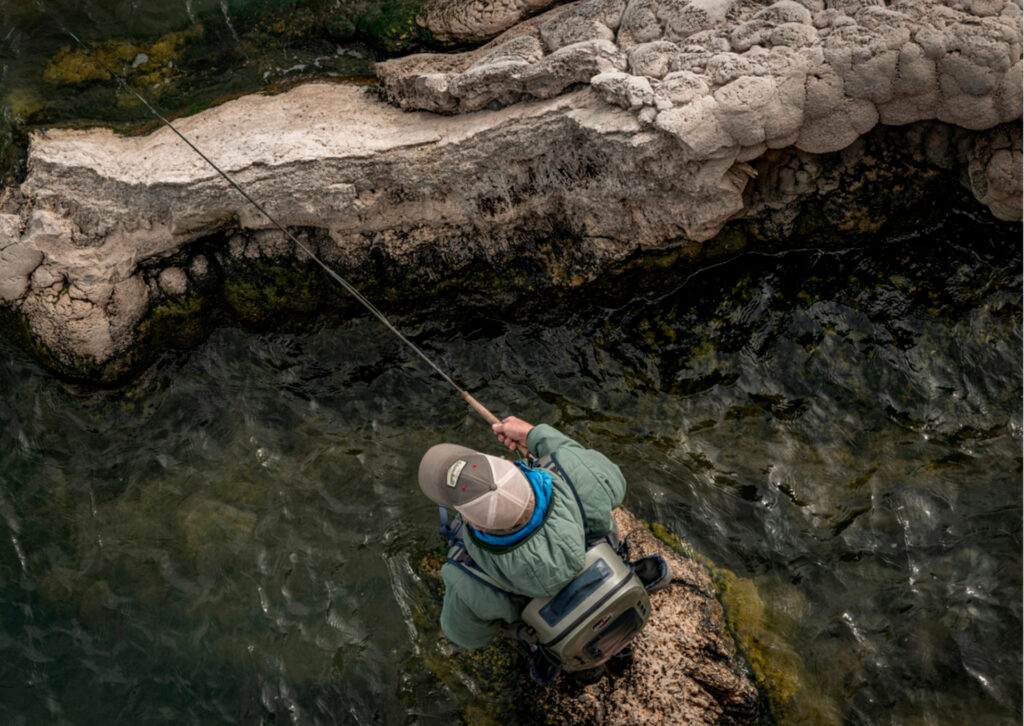Blog
At Adamsbuilt Fishing
At Adamsbuilt Fishing, we believe in supplying fly fishing equipment that enhances your time on the water. Fly fishing requires specialized gear tailored to casting lightweight flies rather than heavy lures or bait. To put it simply, fly-fishing starts with what you pack.
Here’s a breakdown of the essential gear you’ll need for fly fishing:
- Fly Rod: A long, flexible rod designed specifically for fly casting. Fly rods come in various lengths and weights, with the weight designation indicating the size of the fly line it’s designed to cast. Common weights range from 2 to 12, with lighter weights like 4wt and 5wt suitable for small trout streams, and heavier weights like 6wt or 8wt for larger species like salmon or saltwater gamefish.
- Fly Reel: A fly reel is designed to hold the fly line and provide drag resistance when fighting fish. Unlike conventional reels, fly reels are typically simple in design and do not have a gear ratio. The reel size should match the weight of the fly rod and the type of fishing you’ll be doing.
- Fly Line: Specialized weight-forward or double-tapered lines designed for casting lightweight flies. Fly lines come in various weights to match the fly rod, and they’re typically made of PVC or other synthetic materials. The weight of the fly line should match the weight designation of your fly rod.
- Leader and Tippet: A leader is a tapered section of monofilament or fluorocarbon line that attaches to the end of the fly line. Tippet is a finer, transparent line that extends the leader and attaches to the fly. Leaders and tippets come in various lengths and diameters,depending on the fishing conditions and the size of the flies you’re using.
- Flies: Artificial imitations of insects, baitfish, or other prey species designed to attract fish. Flies come in countless patterns, sizes, and colors to match the natural food sources in the water. Common types of flies include dry flies, nymphs, streamers, and wet flies.
- Fly Box: A container to store and organize your flies. Fly boxes come in various sizes and designs, from small pocket-sized boxes to large waterproof cases with multiple compartments.
- Fly Fishing Vest or Pack: A vest or pack with multiple pockets and compartments to carry your fly boxes, leaders, tippets, tools, and other accessories. Vests typically have built-in pockets and attachment points for convenience.
- Polarized Sunglasses: Essential for reducing glare and improving visibility on the water, polarized sunglasses help you spot fish and navigate obstacles like rocks and submerged structure.
- Accessories: Various accessories can enhance your fly fishing experience, including nippers or line clippers, forceps or hemostats for removing hooks, floatant and sinkant for treating flies, and strike indicators or floaters for detecting bites.
- Waders and Wading Boots (if fishing in water): Necessary for fishing in streams, rivers, or other bodies of water where you’ll be wading. Waders keep you dry and comfortable, while wading boots provide traction and protection on slippery rocks and river bottoms.
- Fly Fishing Nets: A landing net with a soft, fish-friendly mesh to safely land and release fish without causing harm.
Remember to match your gear to the specific type of fly fishing you’ll be doing, whether it’s freshwater trout fishing, saltwater flats fishing, or anything in between.
Shop the essentials now.


